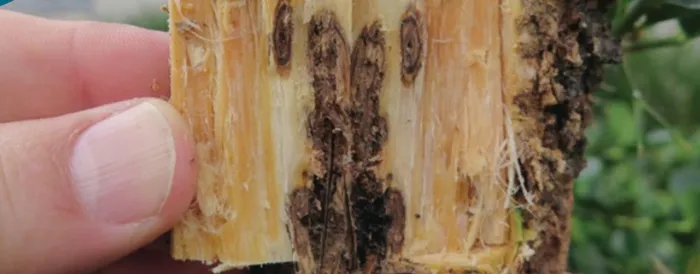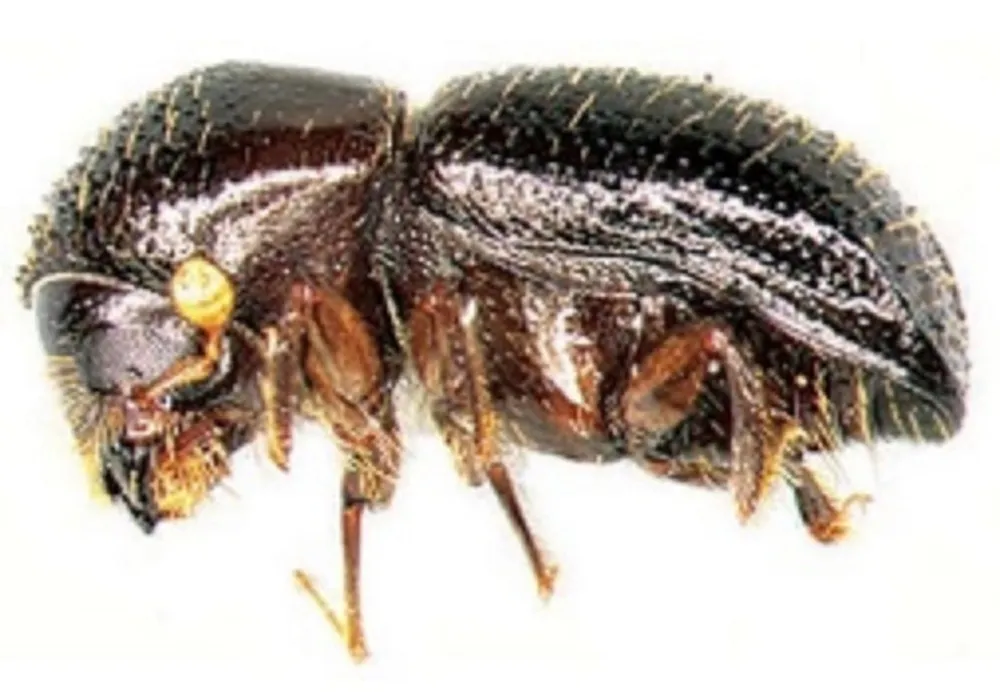Invasive, tree-killing beetle hits southern suburbs

The beetles make tunnels in trees to lay their eggs inside.
An invasive beetle that poses a threat to trees across South Africa was found for the first time in Newlands last week with subsequent infestations discovered soon afterwards in Rondebosch, Mowbray and Claremont.
The City is warning residents to be on the lookout for the polyphagous shot hole borer beetle after it was spotted last Tuesday, January 24, in a boxelder at a private residence in the leafy suburb, which is close to the Table Mountain National Park, including Newlands Forest, and Kirstenbosch Botanical Garden.
According to a City statement, the beetle was first spotted in Cape Town in March 2019 when it was found in an ailing London plane tree in Oldenland Road, Somerset West, and it has been confined to trees in the Somerset West area until now.
The City had helped the owner of the boxelder dispose of the tree, said mayoral committee member for spatial planning and environment Eddie Andrews.
“The wood from the tree was chipped on site and carefully removed under cover of heavy-duty plastic and incinerated at an appropriate site,” he said.
On Wednesday, the City said more infested trees had been found in Newlands as well as in Rondebosch, Mowbray and Claremont with the Liesbeek River identified as a priority pathway.
According to the City, the 2mm beetle is the size of a sesame seed and was first discovered in South Africa in 2017 on London plane trees in the KwaZulu-Natal National Botanical Garden, in Pietermaritzburg.
The beetle’s most likely pathway, or vector, is through the movement of infested wood, originating from dead or dying infested trees, including wood intended to be used for cooking or heating.
Mr Andrews urged residents to inspect the trees on their properties, in particular boxelders, for possible beetle infestations and report sightings as soon as possible.
“We are calling on residents, interest groups and experts to assist the City to prevent this pest from spreading even further. The beetle is threatening our urban forest. This is a very serious and alarming situation as infested trees need to be chipped. I want to caution our communities not to be complacent, and to inspect all trees on private properties for symptoms of infestation.”
The City will hold an online public meeting on Tuesday February 7, from 6.30pm to 8pm, when officials from the Invasive Species Unit will advise on how to identify possible infestations, where to report them, and how to handle chippings.
SANParks spokeswoman Babalwa Dlangamandla said they would need to work with the City to prevent the beetle reaching the Table Mountain National Park.
“It appears that the beetle may have lower impact in natural systems compared to gardens. However, more research and monitoring is needed to determine if this initial observation will remain so in the long term,” she said.
According to the City, the beetles cause damage to trees by introducing a fungus they carry. The adult female burrows and lays eggs in the tree and the fungus, which serves as a food source for the larvae, kills the tree’s water-conducting tissue, which can lead to branch dieback and the death of the tree.
All trees are at risk and symptoms of an infestation include:
• Branch dieback – cracks on the branch; discoloured leaves; dry and leafless branches; branches break-off, revealing webs of galleries filled with black fungus.
• Gumming – blobs of goo coming out of the bark; oozing of liquid and gum from the beetle holes.
• Entry and exit holes – very small holes on the bark of the tree, the size of a sesame seed (2mm); shotgun-like scars developing around holes.
• Staining – brown or dark stains on the bark of the tree.
What to do when your tree is infected:
• Chip the wood, place the infested wood material in refuse bags, seal the bags and put these in direct sunlight as the heat will help to kill the beetle and its larvae.
• Chip the wood into small pieces and dump it in your compost heap as the heat build-up in the composting process will kill the beetle.
• Burn the infected wood (a permit may be required).
• Do not move the wood from the property, but either bag it and leave it in the sun, burn it, or dump it in your compost heap. Removing the wood from the property will spread the pest to other areas.
• Pesticides and fungicides are not effective at eradicating the beetle from infested trees. The only successful method is by chipping the tree and burning the chips, or leaving it in the sun to die.
For more assistance in combating these invasive beetles, call the City’s Invasive Species Unit at 021 444 2357. Visit www.capetown.gov.za/InvasiveSpecies or email invasive.species@capetown.gov.za.

